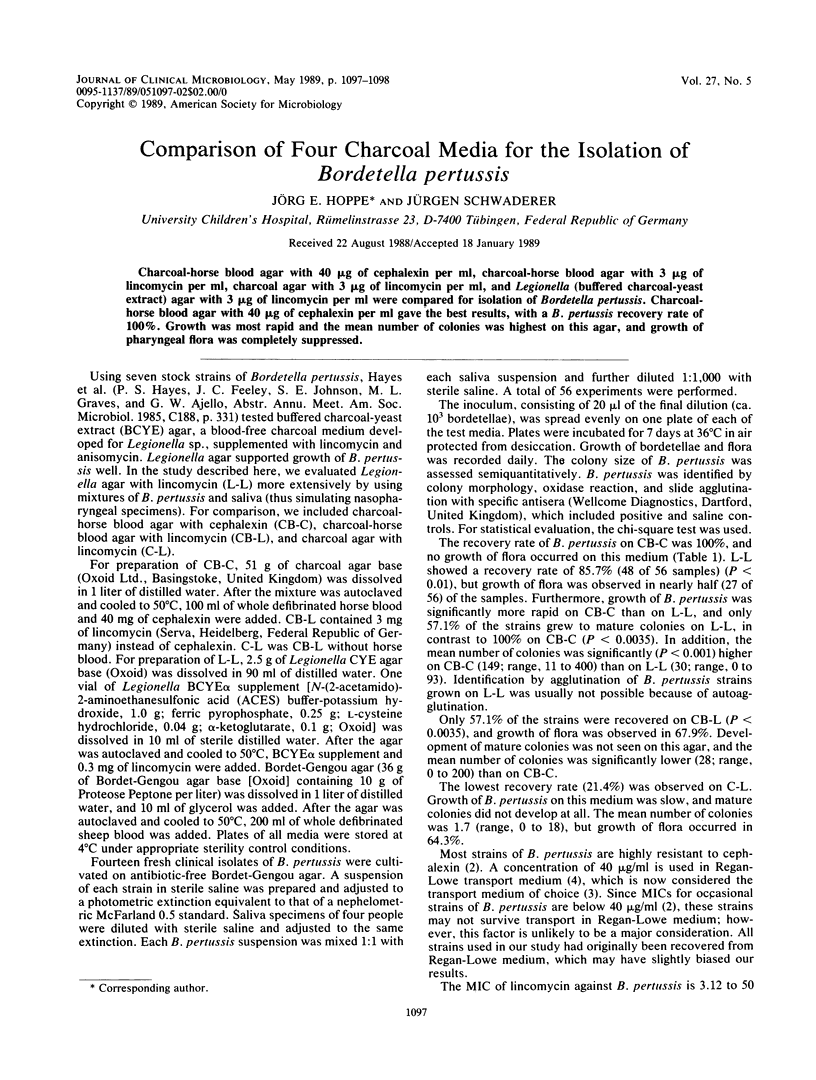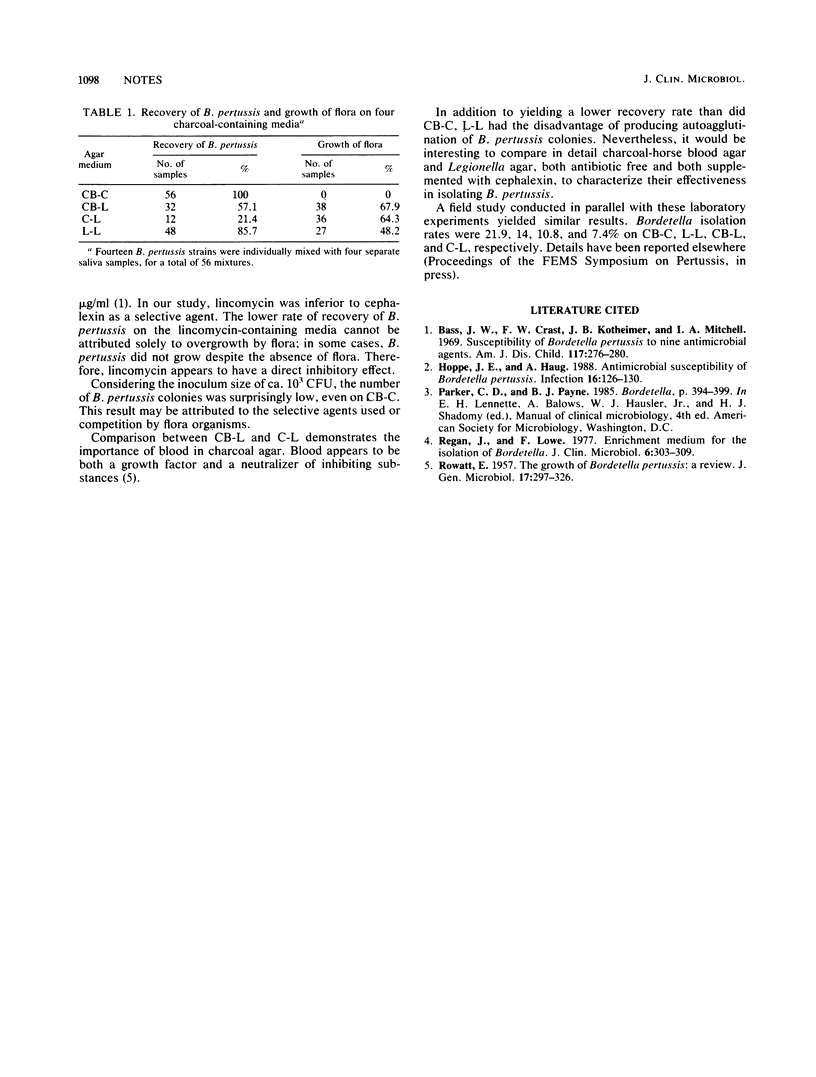Abstract
Charcoal-horse blood agar with 40 micrograms of cephalexin per ml, charcoal-horse blood agar with 3 micrograms of lincomycin per ml, charcoal agar with 3 micrograms of lincomycin per ml, and Legionella (buffered charcoal-yeast extract) agar with 3 micrograms of lincomycin per ml were compared for isolation of Bordetella pertussis. Charcoal-horse blood agar with 40 micrograms of cephalexin per ml gave the best results, with a B. pertussis recovery rate of 100%. Growth was most rapid and the mean number of colonies was highest on this agar, and growth of pharyngeal flora was completely suppressed.
Full text
PDF

Selected References
These references are in PubMed. This may not be the complete list of references from this article.
- Bass J. W., Crast F. W., Kotheimer J. B., Mitchell I. A. Susceptibility of Bordetella pertussis to nine antimicrobial agents. Am J Dis Child. 1969 Mar;117(3):276–280. doi: 10.1001/archpedi.1969.02100030278004. [DOI] [PubMed] [Google Scholar]
- Hoppe J. E., Haug A. Antimicrobial susceptibility of Bordetella pertussis (Part I). Infection. 1988 Mar-Apr;16(2):126–130. doi: 10.1007/BF01644321. [DOI] [PubMed] [Google Scholar]
- ROWATT E. The growth of Bordetella pertussis: a review. J Gen Microbiol. 1957 Oct;17(2):297–326. doi: 10.1099/00221287-17-2-297. [DOI] [PubMed] [Google Scholar]
- Regan J., Lowe F. Enrichment medium for the isolation of Bordetella. J Clin Microbiol. 1977 Sep;6(3):303–309. doi: 10.1128/jcm.6.3.303-309.1977. [DOI] [PMC free article] [PubMed] [Google Scholar]


